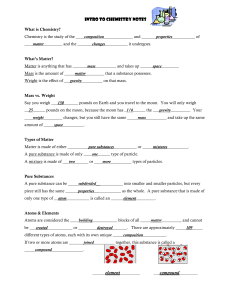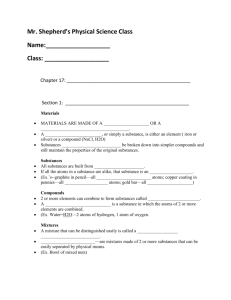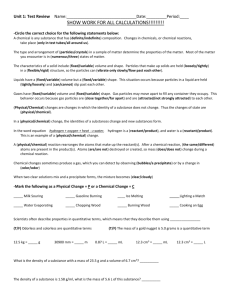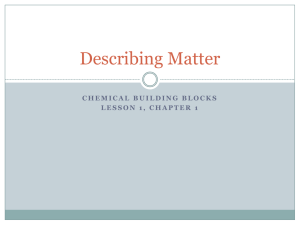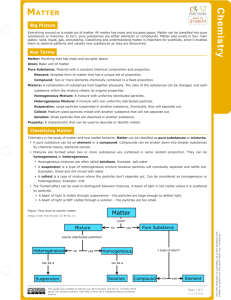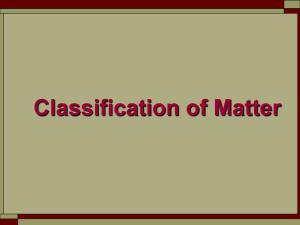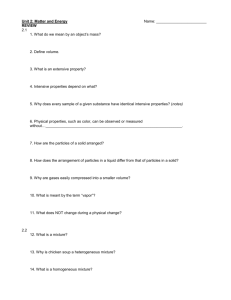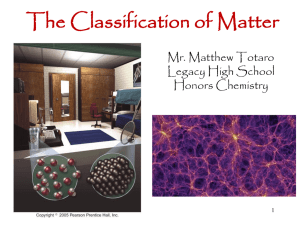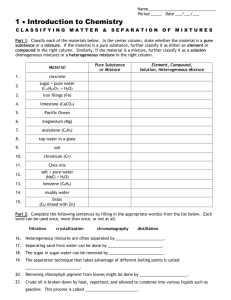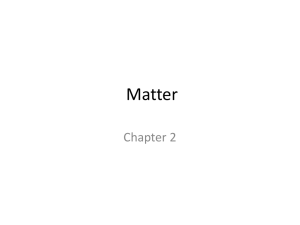Pure Substance, Homogenous & Heterogeneous Mixtures
advertisement
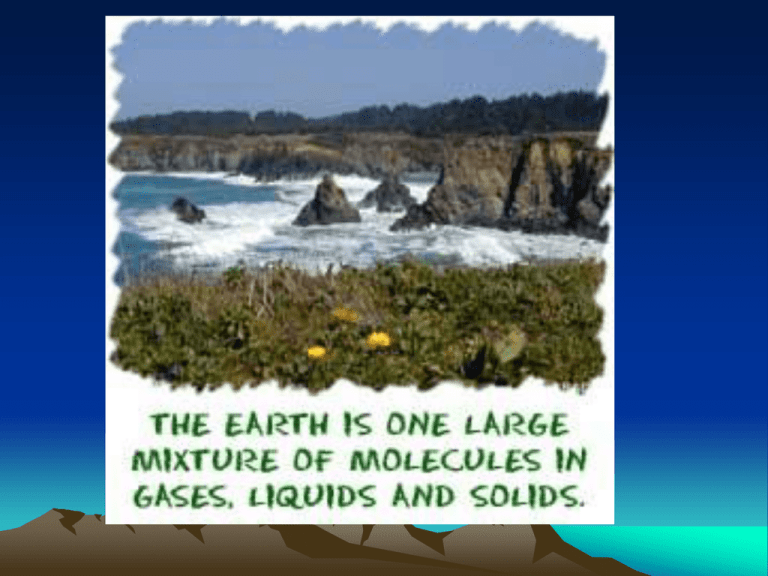
Class Starter Use a concept map and/ or drawings to show your understanding of the following terms relating to the material world. matter mixture atom molecule heterogeneous mixture pure substance compound homogeneous mixture element What is MATTER? • Matter is anything that has mass and takes up space (volume). • All matter is made up of tiny particles called atoms. – These particles are constantly moving, they are never stable. – This is known as the particle theory of matter What is an ATOM? • An atom is the smallest particle of matter. • Atoms are composed of subatomic particles: – protons (+) – neutrons (neutral) – electrons (-) All about ATOMS • Atoms rarely exist alone in nature, instead they combine with other atoms to form MOLECULES. • Molecules consist of atoms bonded together by chemical forces. Example: Water (H2O) Complex Molecules What is the difference between… a pure substance, heterogeneous mixture and homogeneous mixture? Pure Substance Homonegenous Mixture Heterogenous Mixture Pure Substances • There are two types of pure substances, elements and compounds. • An ELEMENT is a substance that cannot be separated into simpler substances by chemical reactions. • IT IS COMPOSED OF ONLY 1 TYPE OF ATOM! – Examples: gold, carbon Gold Elements • Each element is represented by a symbol: – the first letter is always a capital – if there is a 2nd or 3rd letter it will always be lower-case. • There are over 100 elements known to man but only 25 of them are essential to life • carbon (C), oxygen (O), hydrogen (H) and nitrogen (N) alone make up 96% of all the matter on Earth Periodic Table Pure Substances • A COMPOUND is a chemical substance of two or more different chemically bonded (attached) elements. • It consists of more than 1 type of atom Example: salt (NaCl) What is a MIXTURE? • A mixture is any substance that contains at least 2 different types of substances or particles. • There are two types of mixtures: – Homogeneous – Heterogeneous Heterogeneous Mixtures • You can visibly see the 2 particles. – ex: vegetable soup, granite • The substances can be separated physically (mechanically). Homogenous Mixtures • You cannot visibly distinguish the two particles. – ex: apple juice, tap water • The substances can be separated chemically Homogenous Mixtures • A solution is homogeneous mixtures in the liquid phase. • A colloid is homogeneous mixtures in which the substances that compose it can be distinguished using a microscope.




